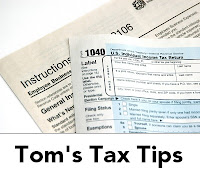Investors have experienced a choppy, volatile bond market in 2013. For many bondholders this has led to negative total returns for the year. For example, the AGG (or iShares Core Total US Bond Market ETF), which is widely seen as a proxy for the U.S. investment-grade bond market, is down -3.5% year to date.
We have had a defensive posture in our Lifestyle Income Bond (LIB) strategy since the beginning of the year, focusing on 1) keeping maturities short and 2) investing in high-yield bonds. We also entered 2013 with a floating rate fund that invests in bonds whose interest payments reset upward as interest rates rise. These moves have helped counter the down performance of bond funds, such as industry legend Bill Gross’s Pimco Total Return Fund (PTTRX), now down -3.5%; and the Pimco Real Return Fund (PRRIX), down -9.03%. Year to date, our LIB account is down -0.38%, net of the highest management fee charged, and is up 0.61% gross of fees.
While bonds will still provide an essential long-term anchor for many portfolios, we expect that the volatility and instability will most likely continue in the short term. At this time, it appears that the 10-Year Treasury Yield is heading towards a rate of 3.00%. Reaching that level will drive down bond prices still further.
With this outlook in mind, we still favor bonds with shorter maturities, as well as over-weighting high-yield individual bonds and floating rate bonds. For both our Foundation and our LIB models, we have also invested in the Pimco Credit Absolute Return Fund (PCARX), a more conservative fund that seeks to generate return in any market.
In addition, we are adding a stake in the Pimco Emerging Local Bond Fund (PELBX), as our ConValTM process has identified emerging market bonds as undervalued. Expect to hear more about our investments in emerging markets in an upcoming blog post!
If you have any further questions please feel free to contact your wealth advocate or our investment department.
Friday, August 30, 2013
Tuesday, August 27, 2013
Take time now. Reduce your taxes later on.
Everyone agrees that the tax code is too complex. While the need for tax reform is a common refrain in Washington, the likelihood of a substantial change is low. Too much is invested in the status quo. While everyone complains about the other guy's deduction, they are loathe to give up their own.
Remember that our complex, often confusing tax code benefits those who take the time to learn its details and use it to their advantage. I will offer occasional tax planning tips designed to help ensure that you pay only the taxes you owe.
Tip #1: Remember that tax planning is a year-round exercise
In some ways, tax planning is similar to maintaining real property: Proper diligence ensures that repairs are kept small, with minimal damage.
Tax planning and actions to reduce taxes can be made throughout the entire year — January through December — to ensure you pay only the taxes you owe.
If you are self-employed, or if your income fluctuates, you should consider using quarterly tax payments requirements to review your investment assets and each asset's impact on gross earnings; as well as your current income from self-employment.
For example, you might want to sell securities to establish short-term losses or long-term gains, alter or fund retirement plans, or incur or defer medical expenses based upon balances in a flexible medical savings accounts.
Don’t wait until April of next year to make decisions! Instead of being reactive, proactively plan now to take advantage of all the possibilities.
From Tom Brunberg, head of Wade Financial Group’s Year Round Tax Planning Service.
Remember that our complex, often confusing tax code benefits those who take the time to learn its details and use it to their advantage. I will offer occasional tax planning tips designed to help ensure that you pay only the taxes you owe.
Tip #1: Remember that tax planning is a year-round exercise
In some ways, tax planning is similar to maintaining real property: Proper diligence ensures that repairs are kept small, with minimal damage.
Tax planning and actions to reduce taxes can be made throughout the entire year — January through December — to ensure you pay only the taxes you owe.
If you are self-employed, or if your income fluctuates, you should consider using quarterly tax payments requirements to review your investment assets and each asset's impact on gross earnings; as well as your current income from self-employment.
For example, you might want to sell securities to establish short-term losses or long-term gains, alter or fund retirement plans, or incur or defer medical expenses based upon balances in a flexible medical savings accounts.
Don’t wait until April of next year to make decisions! Instead of being reactive, proactively plan now to take advantage of all the possibilities.
From Tom Brunberg, head of Wade Financial Group’s Year Round Tax Planning Service.
Subscribe to:
Comments (Atom)


